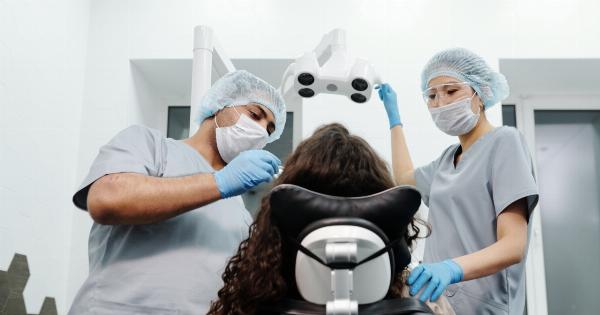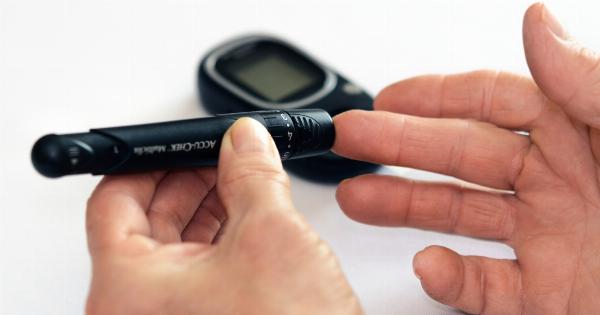Sepsis is a life-threatening condition caused by the body’s response to infection. It can lead to organ failure, tissue damage, and even death if not treated promptly.
Early detection and management of sepsis are crucial to improving patient outcomes and reducing mortality rates. Unfortunately, traditional diagnostic methods have limitations and often fail to provide accurate and timely results.
However, with the advent of revolutionary testing, healthcare providers now have a powerful tool to forecast sepsis deaths and intervene early, potentially saving lives.
The Current Challenges in Sepsis Diagnosis
Diagnosing sepsis is a complex process that requires a combination of clinical evaluation, laboratory tests, and imaging studies.
However, many of the currently available diagnostic tools have limitations that hinder early detection and accurate prognosis. Common challenges in sepsis diagnosis include:.
1. Delayed and Inaccurate Results
Traditional laboratory tests often take several hours to produce results, which can significantly delay the initiation of appropriate treatment.
Moreover, these tests may not always be reliable in differentiating between sepsis and other systemic inflammatory conditions, leading to misdiagnosis and inappropriate management.
2. Lack of Specificity
Many commonly used biomarkers for sepsis, such as C-reactive protein (CRP) and procalcitonin (PCT), lack specificity and can be elevated in other non-septic conditions.
This lack of specificity makes it challenging to confidently diagnose sepsis and appropriately allocate resources for treatment.
3. Inability to Predict Disease Progression
Identifying patients who are at high risk of developing severe sepsis or septic shock is crucial for implementing early interventions.
However, traditional diagnostic methods do not provide comprehensive information on disease progression, making it challenging to proactively manage patients at risk.
Revolutionary Testing: The Game-Changer
Recent advancements in molecular diagnostics and artificial intelligence (AI) have paved the way for revolutionary testing methods that offer improved accuracy, speed, and predictive capabilities in sepsis diagnosis.
These innovative techniques leverage the power of genomics, proteomics, and machine learning to provide a more nuanced understanding of the disease and its progression.
1. Genomic-Based Testing
Genomic-based testing involves analyzing the patient’s DNA to identify genetic markers associated with sepsis susceptibility and progression.
By examining specific gene variations and expression patterns, healthcare providers can assess an individual’s risk of developing sepsis and customize treatment plans accordingly. This personalized approach holds promising potential in tailoring interventions and optimizing patient outcomes.
2. Proteomic Profiling
Proteomic profiling focuses on the analysis of proteins in the patient’s blood or bodily fluids to identify specific biomarkers indicative of sepsis.
By utilizing advanced mass spectrometry techniques, researchers can detect and quantify various proteins with high precision. This detailed protein analysis helps differentiate sepsis from other inflammatory conditions and provides valuable insights into disease severity and progression.
3. Artificial Intelligence and Machine Learning
The integration of artificial intelligence and machine learning algorithms enhances sepsis diagnostic capabilities.
These advanced technologies can analyze vast amounts of patient data, including clinical, laboratory, and imaging information, to identify patterns and predict disease outcomes. By continuously learning from new data, AI algorithms can refine their predictions and provide real-time prognostic insights, effectively forecasting sepsis deaths and guiding timely interventions.
The Benefits of Revolutionary Testing
The introduction of revolutionary testing in sepsis diagnosis offers several significant benefits:.
1. Early Detection and Treatment
With faster and more accurate results, healthcare providers can promptly identify sepsis cases and initiate appropriate treatment strategies.
Early intervention is crucial in preventing the progression of sepsis and reducing the risk of complications and mortality.
2. Improved Specificity
Revolutionary testing methods provide more specific and reliable biomarkers for sepsis diagnosis, reducing the chances of misdiagnosis and inappropriate management.
This specificity allows for targeted treatment plans and optimal allocation of healthcare resources.
3. Enhanced Prognostic Capabilities
By leveraging genomic and proteomic information along with AI algorithms, revolutionary testing can accurately predict disease progression and identify patients at high risk of developing severe sepsis or septic shock.
This prognostic capability enables healthcare providers to implement proactive measures and potentially prevent adverse outcomes.
4. Personalized Medicine
Revolutionary testing methods enable a personalized approach to sepsis management.
By analyzing individual genetic and proteomic data, healthcare providers can tailor treatment plans to each patient’s unique characteristics, optimizing therapeutic interventions and improving overall patient outcomes.
Promising Future Directions
While revolutionary testing has already made significant strides in sepsis diagnosis, ongoing research and technological advancements continue to expand its capabilities. Future directions in the field include:.
1. Point-of-Care Testing
Developing portable and user-friendly diagnostic devices that can deliver rapid results at the patient’s bedside is a key objective.
Point-of-care testing would enable immediate sepsis diagnosis, facilitating timely interventions and reducing healthcare system burdens.
2. Integration with Electronic Health Records
Integrating revolutionary testing platforms with electronic health records can streamline data interpretation and enhance the seamless incorporation of diagnostic insights into patient care.
This integration would further optimize treatment decisions and promote standardized practices across healthcare settings.
3. Longitudinal Monitoring
Continuous monitoring of patients’ genomic and proteomic profiles can provide valuable insights into disease progression, treatment response, and overall prognosis.
Longitudinal monitoring would allow healthcare providers to dynamically adjust interventions based on real-time data, improving sepsis management and outcomes.
Conclusion
The advent of revolutionary testing methods offers unprecedented opportunities in the diagnosis and management of sepsis.
By leveraging genomic analysis, proteomic profiling, and artificial intelligence, healthcare providers can forecast sepsis deaths, initiate timely interventions, and improve patient outcomes. As ongoing research and technological advancements continue to enhance these testing methods, the future looks promising for sepsis diagnosis and personalized treatment.


























